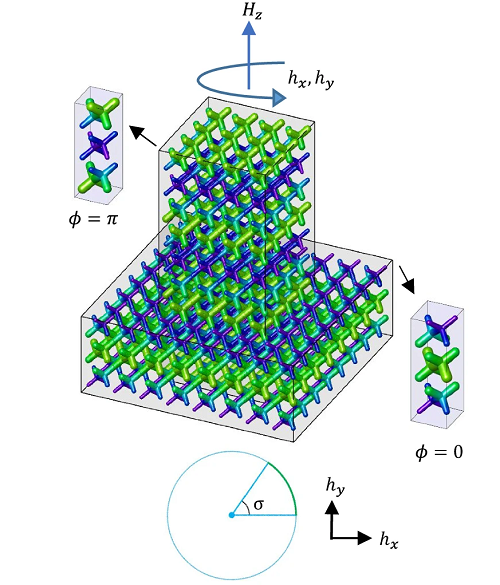A photonic axion insulator in a 3D photonic crystal
Topological insulators are materials with special universal properties, which are protected against perturbations. Such properties are theoretically described by topology, a branch of mathematics concerned with the properties of geometrical objects that are unchanged by continuous deformations. Concretely, topological insulators are electronic materials that have a bulk band gap like an ordinary insulator but have conducting states on their boundaries, i.e., edges or surfaces. The conducting surface is not what makes topological insulators unique, but the fact that this surface state is particularly robust, potentially due to some symmetry like time-reversal.
Thus, in general, we can say that a topological insulator of d dimensions with a given symmetry is insulating in the bulk but supports gapless boundary excitations that cannot be removed by local boundary perturbations without breaking the symmetry. In 2017 Benalcazar et al. 1 published a generalization of this bulk-boundary correspondence. In two and three dimensions, these insulators exhibit no edge or surface states, respectively, but feature gapless, topological corner excitations corresponding to quantized higher electric multipole moments.
In 2018, Schindler et al. 2 introduced a new class of three-dimensional topological phases to which the usual form of the bulk-boundary correspondence also does not apply. The topology of the bulk protects gapless states on the hinges of the three-dimensional crystal, while the surfaces are gapped. Both systems, with gapless corner and hinge states, respectively, can be subsumed under the notion of higher-order topological insulators (HOTIs): An nth-order topological insulator, then, has protected gapless modes at a boundary of the system of codimension n.

Axion insulators are 3D magnetic HOTIs supporting hinge states and quantized magnetoelectric effects, which have been recently proposed for detecting dark-matter axionic particles via their axionic excitations. Despite the theoretical significance and potential applications of axion insulators, no proposals had been put forward yet for their implementation in photonic crystals. Now, a team of researchers proposes and demonstrates 3 the first theoretical model and general design strategy for photonic axion insulator in a 3D photonic crystal.
By building inversion-symmetric domain-walls in gyrotropic photonic crystals, the researchers bind chiral modes on inversion-related hinges, ultimately leading to the realization of an axionic channel of light. These states propagate embedded in a 3D structure, thus protected from radiation in the continuum.
Employing a small external gyromagnetic bias, the team manages a transition across different axionic mode configurations, enabling effective topological switching of chiral photonic fibers, demonstrating the potential use for magnetically tunable photonic switch devices.
In addition to its fundamental theoretical significance, related to the possibility of coupling between photonic axionic excitations and dark-matter axions, the realization of axion insulator photonic crystals has the potential to open up the field of axion-based topology, enabling more efficient and versatile control of light propagation in photonic crystals, and thus advancing the state-of-the-art in photonic communication and optical technologies.
Author: César Tomé López is a science writer and the editor of Mapping Ignorance
Disclaimer: Parts of this article may have been copied verbatim or almost verbatim from the referenced research paper/s.
References
- W. A. Benalcazar, B. A. Bernevig, T. L. Hughes (2017) Quantized electric multipole insulators. Science 357, 61–66 ↩
- Frank Schindler, Ashley M. Cook, Maia G. Vergniory, Zhijun Wang, Stuart S. P. Parkin, B. Andrei Bernevig and Titus Neupert (2018) Higher-order topological insulators Science Advances doi: 10.1126/sciadv.aat0346 ↩
- Devescovi, C., Morales-Pérez, A., Hwang, Y., García-Díez, M., Robredo, I, Mañes, J.L., Bradlyn, B., García-Etxarri, A. & Maia G. Vergniory (2024) Axion topology in photonic crystal domain walls Nat Commun doi: 10.1038/s41467-024-50766-3 ↩